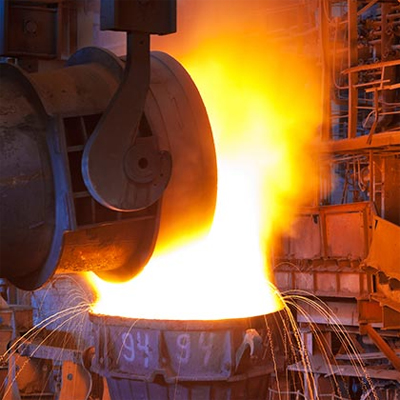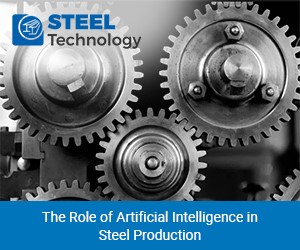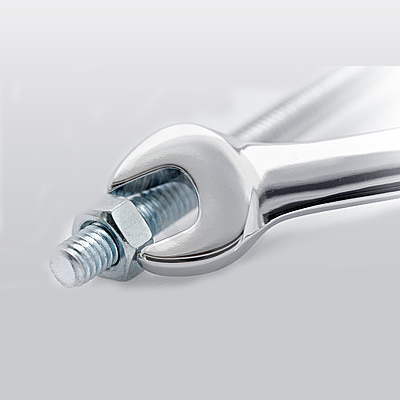Revolutionizing Steel Manufacturing: Unveiling the Power of Digital Twins

In the dynamic landscape of steel manufacturing, technological innovations are reshaping traditional processes and ushering in a new era of efficiency and precision. One such groundbreaking concept making waves in the industry is the implementation of digital twins. This article delves into the transformative potential of digital twins in steel manufacturing, illustrating how this technology optimizes production processes, elevates quality control standards, and enhances overall operational efficiency.
1. Understanding Digital Twins in Steel Manufacturing: Unlocking the Power of Virtual Replicas
The infusion of advanced technologies is transforming conventional frameworks within the steel manufacturing sector. A notable and transformative concept gaining traction is that of digital twins, serving as a technological link connecting the physical and digital dimensions. Digital twins, in this context, are intricately designed virtual replicas that accurately mimic physical assets, processes, or systems in the realm of steel manufacturing.
Unlike static representations, these digital twins dynamically capture the behavior, performance, and intricacies of every facet of the production process. This virtual counterpart becomes a powerful tool, enabling real-time monitoring, analysis, and simulation, thereby revolutionizing the industry. In the steel sector, digital twins facilitate a comprehensive understanding of the manufacturing environment through continuous data collection and transmission via sensors and data connectivity. This real-time insight empowers operators and engineers to conduct sophisticated analyses, identifying trends, anomalies, and potential issues before they manifest physically. This proactive approach enhances decision-making, minimizes downtime, and contributes to overall operational efficiency.
Another defining feature of digital twins is their ability to simulate real-world scenarios, allowing for scenario testing, process optimization, and predictive modeling in steel manufacturing. Manufacturers can experiment with different parameters, assess potential impacts on production outcomes, and fine-tune processes without risking physical assets. This simulation capability significantly accelerates innovation and improvement cycles.
Steel manufacturers strategically implement digital twins across various production stages, from raw material processing to the final product. This strategic deployment encompasses the virtual replication of machinery, production lines, and entire manufacturing facilities, providing a holistic view of operations. As a result, data-driven decision-making and continuous improvement initiatives are becoming integral to the industry's pursuit of efficiency and excellence.
2. Optimizing Production Processes:
The integration of digital twins is driving a transformative shift in how production processes are orchestrated and optimized. Digital twins serve as a cornerstone for predictive maintenance strategies in steel manufacturing, creating virtual replicas of critical machinery to monitor real-time health and performance. Integrated with predictive analytics algorithms, these digital twins forecast potential equipment failures, allowing for proactive maintenance interventions that reduce unplanned downtime. For instance, a steel plant successfully implemented digital twins for its blast furnaces, predicting wear and tear on crucial components and strategically scheduling repairs during planned downtimes.
Process optimization reaches new heights through the virtual simulation capabilities of digital twins. Manufacturers can experiment with various parameters within a virtual environment, such as temperature, pressure, and material composition, to identify optimal conditions for production. An example includes a steel rolling mill utilizing digital twins to simulate different rolling speeds and pressures, leading to the optimization of the actual rolling process, reduced energy consumption, and improved final product quality.
Digital twins provide a holistic view of resource utilization throughout the production lifecycle, from raw materials to energy consumption. Manufacturers leverage data generated by digital twins to identify inefficiencies and implement targeted improvements, contributing to cost savings and sustainable practices. For instance, a steel foundry employed digital twins to monitor and optimize furnace energy consumption, achieving significant reductions in energy costs while maintaining production levels.
Integrating digital twins into the production workflow allows steel manufacturers to streamline operations and enhance overall productivity. Real-time data from virtual replicas facilitates agile decision-making, minimizes bottlenecks, and optimizes the flow of materials and processes. A notable example is a large steel fabrication facility using digital twins to track the movement of raw materials, work in progress, and finished products, leading to improved workflow efficiency, reduced lead times, and enhanced overall productivity.
Digital twins are propelling steel manufacturing into a new era of precision and efficiency. Their optimization of production processes, encompassing predictive maintenance, virtual simulation, and resource utilization insights, positions digital twins as indispensable tools for increasing overall output while concurrently reducing costs. As the steel industry continues to embrace these innovations, a more agile, sustainable, and competitive future comes into sharper focus.
3. Improving Quality Control:
The integration of digital twins in steel manufacturing has brought about a significant impact on quality control measures within the industry. By facilitating real-time data collection and analysis, digital twins play a pivotal role in the early detection of defects, deviations, and irregularities in the production process, thereby contributing to enhanced product quality standards.
The ability of digital twins to create virtual replicas of physical assets allows for continuous monitoring and assessment of manufacturing processes. Real-time insights generated through this virtual representation empower operators and quality control teams to identify potential issues as they arise. Through the analysis of data from digital twins, deviations from expected standards can be swiftly detected, enabling timely corrective actions.
Several case studies underscore the instrumental role of digital twins in maintaining and improving product quality. Instances include scenarios where digital twins have been employed to monitor variables such as temperature, pressure, and material composition, leading to the early identification and rectification of deviations, ultimately ensuring the adherence to stringent quality standards in steel manufacturing. The utilization of digital twins in quality control not only bolsters the ability to meet quality benchmarks but also exemplifies a proactive and data-driven approach that is increasingly becoming integral to the pursuit of excellence in the steel industry.
4. Enhancing Operational Efficiency:
Digital twins are proving to be indispensable assets in enhancing overall operational efficiency within the realm of steel manufacturing. Their multifaceted contributions extend to critical areas such as supply chain management, inventory optimization, and workflow coordination. In supply chain management, digital twins provide real-time visibility into the movement of raw materials, work in progress, and finished products. This heightened transparency enables agile decision-making and responsiveness to changes, ensuring a streamlined and efficient supply chain.
Moreover, digital twins are instrumental in optimizing inventory management by providing real-time insights into stock levels, fluctuations in demand, and production requirements. This enables manufacturers to uphold optimal inventory levels, mitigating the risks of both surplus stock and stockouts.
Workflow coordination benefits from the integration of digital twins, facilitating real-time monitoring and analysis of production processes. The synchronized virtual representation of machinery and production lines enables efficient coordination, reducing bottlenecks and enhancing the overall flow of operations. The implementation of digital twins also holds the promise of substantial cost savings and increased competitiveness.
By providing actionable insights, digital twins empower manufacturers to make informed decisions, optimize resource utilization, and proactively address potential inefficiencies. Ultimately, the strategic adoption of digital twins in steel manufacturing not only elevates operational efficiency but also positions companies to thrive in a competitive landscape by achieving cost savings and maintaining a nimble, responsive approach to industry demands.
5. Overcoming Challenges and Concerns:
While the adoption of digital twins in steel manufacturing brings forth transformative benefits, it is essential to acknowledge and address the inherent challenges associated with this innovative technology. Among these challenges are concerns related to data security, integration complexities, and the need for specialized workforce training.
Data security is a paramount consideration as the real-time monitoring and analysis facilitated by digital twins involve sensitive operational information. Robust cybersecurity measures, including encryption protocols and access controls, must be implemented to safeguard against potential threats. Integration complexities arise from the need to seamlessly connect digital twins with existing systems and technologies within the manufacturing environment.
Adopting open standards and employing middleware solutions can help streamline integration processes. Workforce training is another critical aspect, as the effective utilization of digital twins requires a skilled and knowledgeable workforce. Training programs and continuous education initiatives can bridge the skills gap and ensure that personnel are equipped to leverage the full potential of digital twins.
Emphasizing these challenges and proposing strategic solutions is crucial for encouraging the widespread adoption of digital twins in the steel industry, fostering a resilient and innovative manufacturing ecosystem.
6. Future Outlook and Trends:
The future trajectory of digital twins in steel manufacturing promises to be marked by a convergence of advanced technologies and a heightened focus on sustainability to meet evolving industry demands. Emerging trends suggest an increasing integration of artificial intelligence (AI), machine learning (ML), and advanced analytics into the realm of digital twins. AI and ML algorithms enhance the predictive capabilities of digital twins, enabling more accurate forecasting of equipment behavior, maintenance needs, and production outcomes. The synergy between digital twins and these intelligent technologies facilitates a proactive approach to problem-solving and optimization.
Moreover, digital twins are expected to play a pivotal role in supporting sustainable practices within the steel industry. By providing real-time insights into resource utilization, energy consumption, and environmental impact, digital twins enable manufacturers to make data-driven decisions that contribute to reducing the industry's ecological footprint. As the steel industry continues to evolve, the holistic capabilities of digital twins, coupled with the integration of advanced technologies, are poised to not only enhance operational efficiency but also position steel manufacturing as a key player in the pursuit of a sustainable and technologically advanced future.
Conclusion:
In summary, the incorporation of digital twins into steel manufacturing signifies a transformative change, improving efficiency, precision, and sustainability. These digital replicas optimize production, enhance quality control, and streamline operations. Despite challenges such as data security and integration complexities, adopting digital twins positions the industry for a competitive future. With the advancement of technology, the merging of AI and machine learning with digital twins offers proactive solutions and a pivotal role in promoting sustainable practices. Steel manufacturing, through the utilization of digital twins, is not merely adapting to change but is emerging as a leader in the quest for a technologically advanced and environmentally friendly future.











